OnePlus X: Impressive mid-range smartphone [Review]
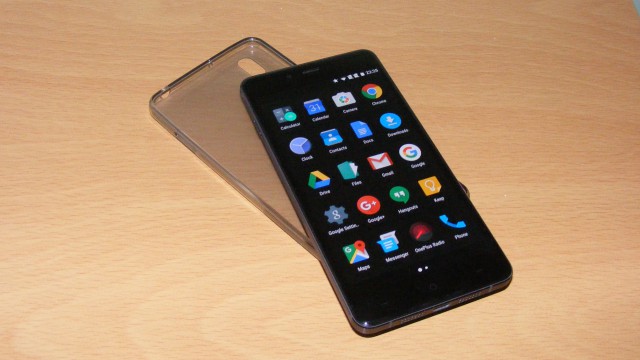
OnePlus may not be a name that springs instantly to mind when you think of smartphones, but it really should be. It is a Chinese company that is fast developing a reputation for turning out quality handsets at something of a bargain price.
The company's latest OnePlus X model starts at around £200 which is only about £40 below the price of its flagship, the better specified OnePlus 2 model, so does it live up to the company’s claims that this is an affordable phone with premium features?
In the Box
You get a nicely presented package which makes it feel like you’re getting a quality product from the off. Lift off the lid and you find the phone sitting on top of a red box which contains the charger, instructions, a clear screen protector and a rubber sleeve.
The phone itself looks smart with milled edges that catch the light and a shiny glass black back panel -- though this does show every fingerprint. It’s just under 7mm thick and weighs a relatively lightweight 138 grams. There’s a limited edition Ceramic version of the phone available too, but in appearance it’s not too different from the black glass of our review unit and its functionality is the same.
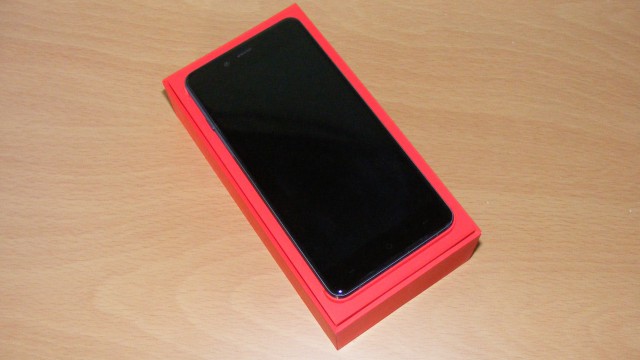
Power and volume switches are on the right-hand edge; again, these have a machined finish that makes them feel a cut above the plastic buttons on, say, a Nexus 5X. The combined SIM card and memory card slot, accessed in the usual way by poking a tool into a little hole, is also on the right.
On the left is a three position Alert Slider; this is a novel touch that lets you quickly set the phone to silent, priority or tell-me-everything modes in a single action. It’s handy for when you’re going into meetings for example allowing you to quickly silence the phone without having to access the screen. On the bottom edge are the speaker grilles and a standard microUSB port, the headphone socket is at the top left. Unlike the OnePlus 2 the X lacks a fingerprint scanner.
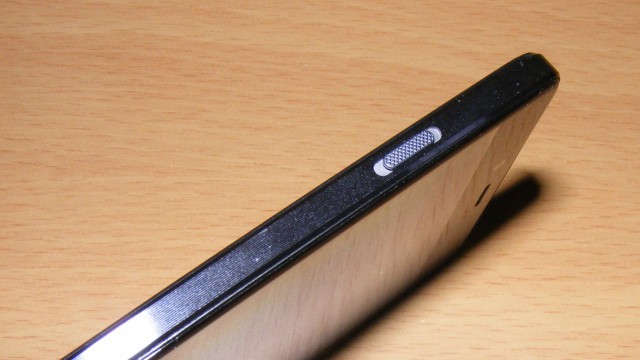
There are hardware buttons at the base of the screen for the usual back, home and recent apps functions. These are very faint and quite hard to see, but you can opt to use soft buttons instead; these nibble away a bit of your screen space. Like the Nexus 5X, the phone is a nice size to hold and operate one-handed thanks to a 5-inch screen.
Under the skin is a Qualcomm Snapdragon 801 quad-core processor, 3GB of RAM, 16GB of storage and an Adreno 330 graphics processor. If you need more space you can add a microSD card to expand the storage up to 128GB.
There’s a 13MP rear camera and an 8MP front and the display offers 1,920 x 1,080 resolution. It’s all powered by a 2,525mAh battery which, depending on how you use it, should get you a couple of days between charges. It’s a dual-SIM phone too, connectivity is via 4G, Wi-Fi and Bluetooth, but you don’t get NFC.
The OnePlus X runs the previous generation Android 5.1.1 Lollipop, and it has OnePlus’ Oxygen user interface. This doesn’t make many changes to stock Android other than adding light and dark menu options, shortcuts to apps you use frequently and some tweaks to app management. It’s largely free of bloatware though, with the only installed apps being the SwiftKey keyboard, a custom file manager, Google Office apps and a OnePlus Radio app.
Business Features
The Alert Slider is a clever extra for busy executives who don’t want to be interrupted by their phone in meetings -- or perhaps when entertaining clients at the opera. Move the switch to one of its three positions and the phone just gives a little buzz and displays a message on the screen to acknowledge the instruction.
The dual-SIM feature is useful if you want to have access to separate business and personal networks on the same handset. However, one of the SIM slots doubles as a microSD card slot; a neat design, but it means you can’t have more storage and two SIMs installed at the same time.
The Oxygen UI’s app management feature gives you the ability to control permissions for individual apps, something that’s standard in Android Marshmallow, but not in Lollipop. This helps prevent data leaks by keeping your information private, limiting what information and hardware features each app is allowed to access without preventing you from using its features.
The Oxygen skin also lets you assign shortcuts to the physical home, back and recent apps buttons. You can have up to two shortcuts on each one, useful for apps that you use on a regular basis. Google Office apps for Docs, Sheets and Slides are pre-installed allowing you to work when you’re out of the office and access your data stored in the cloud.
In Use
The OnePlus X is a good size for ease of one-handed use and is nicely weighted without being too heavy. It also looks and feels like a much more expensive piece of kit, using it back-to-back after the Nexus 5X there’s no doubt that in a blind test you’d say the OnePlus was a much costlier device.
The phone feels nice in your hand too and the machined edges make it easy to grip. It does lack some hardware options you’ll find on pricer models, a fingerprint scanner and NFC communication being the main missing features.
Having a standard USB port means you’re more likely to already have adaptors, car chargers, etc that will fit, but on the other hand you miss out on USB-C features like faster file transfers. The supplied plastic cover feels a bit tacky, but it does help protect the edges and back of the phone from knocks and scratches and helps you to grip the handset. A selection of other covers is available from the OnePlus website if you fancy something a bit more stylish.
The OnePlus X’s Snapdragon 801 processor spec is one you’d have seen in the priciest flagship phones just a year or so ago. But despite the fact that it isn’t the very latest in CPU technology it feels easily fast enough to cope with day-to-day tasks. It streams video smoothly, opens apps fast and never feels like it’s struggling.
The display is a real high point of this phone, you often get LCD screens at this price point but the OnePlus uses AMOLED. What this means on a technical level is that the individual pixels are illuminated rather than the screen being cross lit as with an LCD display. In practice this translates to a display that delivers bright, vibrant colors and superb contrast, which means deep blacks. This combined with the black of the handset really seems to have colors zinging out from the screen.
Combine this with 440ppi pixel density that delivers nice sharp text and images and you have what is probably one of the best displays of any phone in this price bracket. In fact the display here is rather better than that on the more expensive OnePlus 2.
The physical buttons below the screen on the other hand are very faint and there’s no illumination option so you may well find yourself sacrificing some screen space to the soft buttons for the sake of ease of use. The screen has an auto brightness setting, but it does seem to make things a little too bright indoors; you’ll probably end up finding a comfortable setting for most conditions and turning the automatic option off.
Of course you’ll want to use headphones for serious listening, but the speaker -- yes, speaker, although there are two grilles on the bottom of the phone there is only one -- on the OnePlus is actually pretty good, delivering a clear sound at everyday volume levels.
It begins to sound a bit harsh if you crank things up higher, but that’s carping as few phones offer hi-fi speaker quality. The OnePlus Radio app lets you receive FM stations, it uses the headphone cable as an antenna so you can’t listen via the speakers when using it.
The Oxygen interface doesn’t mess too much with the Android user experience. As standard it has a dark theme which nicely shows off the capabilities of the phone’s screen. Probably the most useful feature it offers is frequently used shortcuts which can be found by swiping right from the home screen.
This gets automatically populated with apps and contacts according to use, rather like the frequently visited sites on your Google home page, you can also take control yourself and add widgets here for specific apps making it a good aid to everyday use.
Oxygen does have some odd omissions too, there’s no Gallery app, for example, meaning you have to find your photos and videos via the Files app. Oxygen is quite tweakable, however, so you should have no problem customizing it to fit in with the way you want to work.
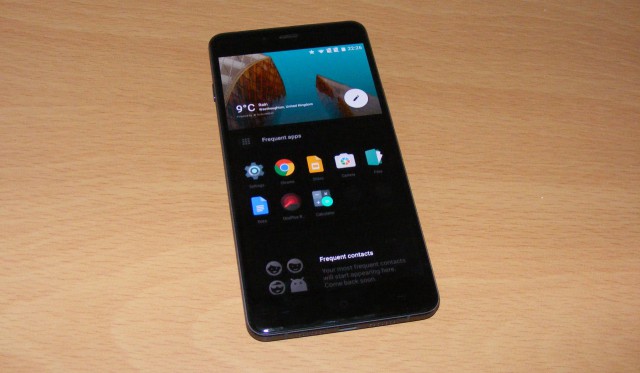
Out of the box the OnePlus X comes with a number of gesture controls enabled. You can draw an "O" to launch the camera app for example or slide two fingers down the screen to pause playback of music or videos. You can turn these gestures on and off according to taste.
The rear camera delivers okay results though there’s no image stabilization and the f2.2 lens is slower than the one on its OnePlus 2 brother. You simply tap on the screen to focus, this also brings up a little gear wheel icon which you can drag around to adjust the exposure.
In low light it automatically cranks up the ISO level, this delivers clear images -- without using flash on many occasions -- but at the expense of some graininess. You also get some extra shooting modes built in including HDR for balancing detail and shadow, and a Beauty mode for enhancing portraits.
There’s also something called Clear Image which creates a higher res picture by stitching 10 images together. This takes just a couple of seconds to do and although it sounds gimmicky it delivers surprisingly good results.
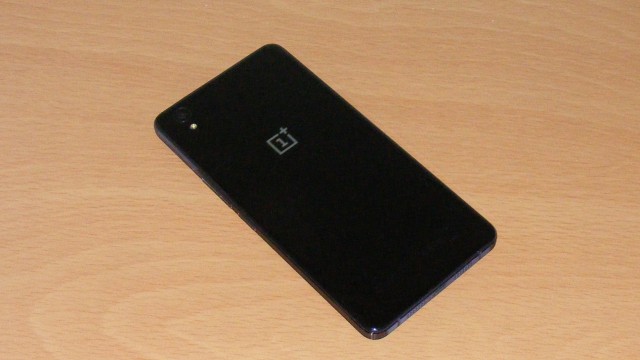
There’s no 4K on offer, but you can capture video at 720P or 1080P. The 8MP front camera is not brilliant, but is fine for selfies and video calls. You do get a selection of basic editing functions which allow you to carry out simple fixes like adjusting brightness and cropping images, as well as adding some effects. It’s never going to get keen photographers excited, but the OnePlus X camera delivers perfectly good everyday snapshots.
Conclusion
Although it only costs £199/$249, the OnePlus X pulls off the trick of looking and feeling like a much more expensive phone, a result of the glass back and nicely machined metal components. There are no plasticky budget overtones here and the quality of the screen adds to the overall good impression too.
That said it’s not perfect, having to sacrifice the dual-SIM capability for extra storage is a bit frustrating, and the lack of NFC means no using Android Pay or quickly swapping data with other handsets. Other more minor frustrations include the hard to see hardware buttons below the screen and the fact that the back quickly becomes covered in fingerprints making the phone look rather scruffy.
There’s no doubt that this is an impressive phone for the price and one that you won’t be ashamed to whip out in high-level meetings -- or for that matter in the pub. Whether you buy one really depends on how you’re going to use it.
Given that the OnePlus 2, which does come with a fingerprint scanner and has a better camera, but still no NFC, only costs £40 more you might want to weigh up which is the better option depending on which features really matter to you.
Pros
- Excellent screen
- Smart design
- Well made
Cons
- No NFC
- Faint hardware buttons
- Second SIM/SD card trade-off
ITProPortal Review: 7/10
Published under license from ITProPortal.com, a Net Communities Ltd Publication. All rights reserved.